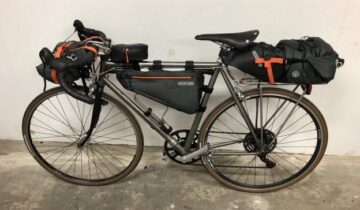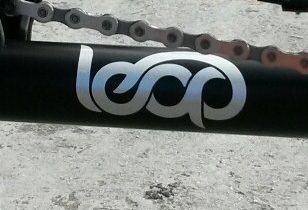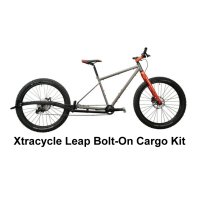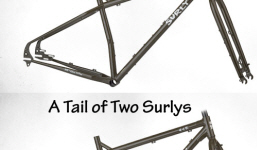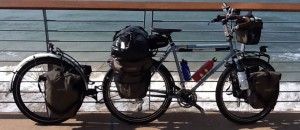 When planning a long distance bicycle tour, much consideration must be given to the type of bike frame chosen and the selection of components used in the build. Some compromises need to be made based upon the availability of spare parts in remote areas of the world. We have all heard the debates over 26″ wheels vs 700c wheels but what about the 29ers or 29+ wheels? How about fat tires? Internally geared hubs like the Rohloff or Alfine have proven to be reliable and may have a place in some applications but how many local bike shops in the developing world have ever seen one, let alone repaired one? Using one of these hubs on a long tour is a calculated risk. Even if the geared hub stands up to the task, there is still the question of the wheel rim integrity and the spokes. To swap out a split rim during a tour is a minor hassle on a standard deraileur system, as is replacing a cassette sprocket. I have had to deal with both of these problems in the past and a quick remedy in each case was to purchase a cheap replacement rear wheel or cassette until I was able to find a shop with tools and proper parts. Even a broken deraileur can be worked around by a clever cyclist to keep on rolling. However, a broken internally geared hub usually takes you out of the game quickly due to scarcity of parts and the replacement cost factor. Then there is the debate over carbon belt drives vs chain drives. Same conclusion, chains are easy to find, size and maintain in remote areas. Belt drives are nice but my LBS doesn’t carry them and I’m certain that it would be next to impossible to find one in Egypt or Sudan. Disc brakes are another area of concern. If you are comfortable using disc brakes, consider purchasing a frame with both disc brake mounting brackets and V brake posts and build your wheels up with machined rims. This way you can always add a pair of rim brakes to your bike in a pinch. Cantilever and V brakes are available almost universally. The point I am making here is that you need to be as adaptable as your bicycle is. So, let us put all the manufacturer reps BS to the side and take a long hard look at what a modern touring bicycle should be. I’m not talking about the “flavor of the month”, I’m talking about a strong, reliable and capable machine which can survive anything the world throws at it. It may not be esthetically beautiful but it will be the right tool for the job.
When planning a long distance bicycle tour, much consideration must be given to the type of bike frame chosen and the selection of components used in the build. Some compromises need to be made based upon the availability of spare parts in remote areas of the world. We have all heard the debates over 26″ wheels vs 700c wheels but what about the 29ers or 29+ wheels? How about fat tires? Internally geared hubs like the Rohloff or Alfine have proven to be reliable and may have a place in some applications but how many local bike shops in the developing world have ever seen one, let alone repaired one? Using one of these hubs on a long tour is a calculated risk. Even if the geared hub stands up to the task, there is still the question of the wheel rim integrity and the spokes. To swap out a split rim during a tour is a minor hassle on a standard deraileur system, as is replacing a cassette sprocket. I have had to deal with both of these problems in the past and a quick remedy in each case was to purchase a cheap replacement rear wheel or cassette until I was able to find a shop with tools and proper parts. Even a broken deraileur can be worked around by a clever cyclist to keep on rolling. However, a broken internally geared hub usually takes you out of the game quickly due to scarcity of parts and the replacement cost factor. Then there is the debate over carbon belt drives vs chain drives. Same conclusion, chains are easy to find, size and maintain in remote areas. Belt drives are nice but my LBS doesn’t carry them and I’m certain that it would be next to impossible to find one in Egypt or Sudan. Disc brakes are another area of concern. If you are comfortable using disc brakes, consider purchasing a frame with both disc brake mounting brackets and V brake posts and build your wheels up with machined rims. This way you can always add a pair of rim brakes to your bike in a pinch. Cantilever and V brakes are available almost universally. The point I am making here is that you need to be as adaptable as your bicycle is. So, let us put all the manufacturer reps BS to the side and take a long hard look at what a modern touring bicycle should be. I’m not talking about the “flavor of the month”, I’m talking about a strong, reliable and capable machine which can survive anything the world throws at it. It may not be esthetically beautiful but it will be the right tool for the job.
